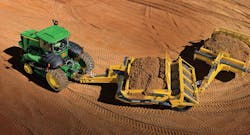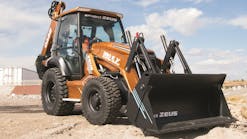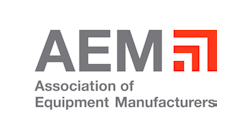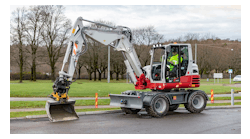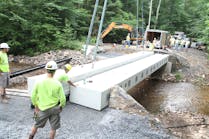The press release was meant to call attention to one of Terex Corp.’s special training programs: its Annual Service School for mechanics and service technicians. I’m always interested when manufacturers talk about providing training through their own “schools” so I bit. But when I called for more information, I was surprised to find myself talking to the company’s customer service manager. “Terex is committed to having world class customer service,” says Ken Vlasman, without missing a beat.
Huh? What does customer service have to do with a three-day training event positioned to offer technicians and service mechanics the latest “tips, tricks and techniques” from “experienced Terex instructors?” Sounds like training to me.
Truth be known, I had missed the first clue, blown right by the line in the press release that described the training as being targeted at mechanics and service technicians, not for operators, as I expected from a heavy equipment manufacturer. And more specifically, that it was for those mechanics and technicians who service “aerials,” which, for the less well informed among us, means cranes and their like.
“You’ve got a man 50 to 125 feet in the air, and you want to be sure he’s up there in a safe position,” says Vlasman. The you in this case being multiple—the company that owns the equipment, the dealer who sold the equipment, and the manufacturer who designed and assembled it. Looked at this way, maybe it wasn’t so much of a stretch to think of training as servant to customer service, or more accurately, customer support.
After a few more questions and answers lobbed back and forth between myself and my informant, it became obvious that we were talking about a matter of perspective. It was a way of looking at things that, if sufficiently actualized, could boost the status of manufacturer training programs at both ends of the spectrum: among both the people who make the equipment, who want the equipment to function as efficiently and safely as they designed it; and among the people who buy the product, who also want it to work the way it’s supposed to, and with minimum hassle.
According to Vlasman, average tenure in Terex’s customer support department is 25 years, and it’s from this group that the instructors in the Annual Service Schools are drawn. When I asked if these people volunteered their services or were specially selected—thinking to pass on some tips about selection criteria for the adventurous out there who might be interested in duplicating this approach—he unleashed another arrow in his training-as-customer-service quiver and explained that their stint as instructors was just one aspect of their larger tech support job. “They may spend x amount of time in the office on the phone taking customer calls (putting out fires was the way he described it), and the next week they may be flying off somewhere to put on a service school for a customer, and the week after that working as an instructor in one of our own schools.
“We have some instructors who actually started out on the shop floor and went all the way through building the equipment. One has built fiberglass cylinders; another went through the whole process of assembling large aerials. So when these people do training, they know what they’re talking about. And if we have a piece of equipment in the field that has a problem, they’ll also go there and help the customer out.”
The more Vlasman and I talked, the more it became obvious that the Terex people were on to something. “We stood back and looked at where we were getting the most customer support calls, what parts of the equipment were involved—the rotation systems, the electrical systems, the leveling systems, what functions can and can’t be programmed. The purpose of our schools is to help mechanics and technicians understand how the equipment goes together so they can fix it themselves—and we don’t get quite so many calls.” I could almost see the sheepish grin on his face.
Once you get by the cost/benefit ratio—more training, less calls—and that the guys who do the instruction are also the guys who take those calls, the program has elements worth duplicating.
It all began conventionally some 20 years ago with classroom instruction and gradually eased out into more active participant involvement. “Providing a hands-on approach creates an atmosphere where people feel comfortable asking questions and sharing their experiences,” says Vlasman. “We add to this with the opportunity for in-depth experiences with various company units, components, and systems.”
The three-and-a-half-day school typically runs just under $1,000 per person and includes dinner and evening networking events. Each session tops out at 60 enrollees who are divided into 12 groups of five each and rotated through what Vlasman described as “stations.”
“We have components at each station they can tear apart or do procedures on, and they can get in as deep as they want to go.” Included among the hands-on stations are various factory tours such as the fiberglass and assembly plants. “They see how the equipment is built from the ground up, and it gives them a little more appreciation on how it goes together and how to work on it. They see how we build a fiberglass boom, right down to the finished product as it goes out the door. Seeing how it’s put together, from the first part to the finished product, gives them a whole new appreciation for what they do and their part in its safe operation.”
There are no more than 10 participants at individual stations at a given time. They wear headsets for the plant tours—the better to hear the instructor—but can ask questions any time. “There’s a certain amount you want to get through at each station,” says Vlasman, “but at the same time it’s open enough that this actually helps drive the conversation and enhances the training.” Participants are asked to come dressed as they would for work with safety glasses and other protective equipment.
“We’ve got one guy who’s been with us 44 years, so he’s written the book and rewritten it. All of our instructors come from a basis of real life experience because they’ve built the equipment or been out in the field helping customers. They’re ‘been there, done that’ type guys who know the industry and understand the problems that can develop.” (They can also quickly spot issues likely to generate customer calls and pump them in the curriculum.)
I asked Vlasman how many participants pick up on the station format and get involved. He estimated about half. “It’s like any other training, some people go because they have to. But others are there to learn, and they want to absorb everything they can.” What I didn’t ask was whether Terex had seen a decrease in customer support calls and by how much—50%, say.
Later, when I thought about it, I decided that given human nature, customer support calls are a way of life, and that Terex’s Annual Service Schools are probably as good a hedge as any for taking advantage of human initiative and people who want to learn. Also that the company’s model of melding training with customer support does a service to training in general, which can get short shifted in a company’s hierarchy, and the tech support representatives, who are often overloaded. All while enhancing the company’s image, which, after all, is what customer service departments are all about.
For information on Terex’s other training programs, including its online training university, go to http://bit.ly/1NPtypW.

